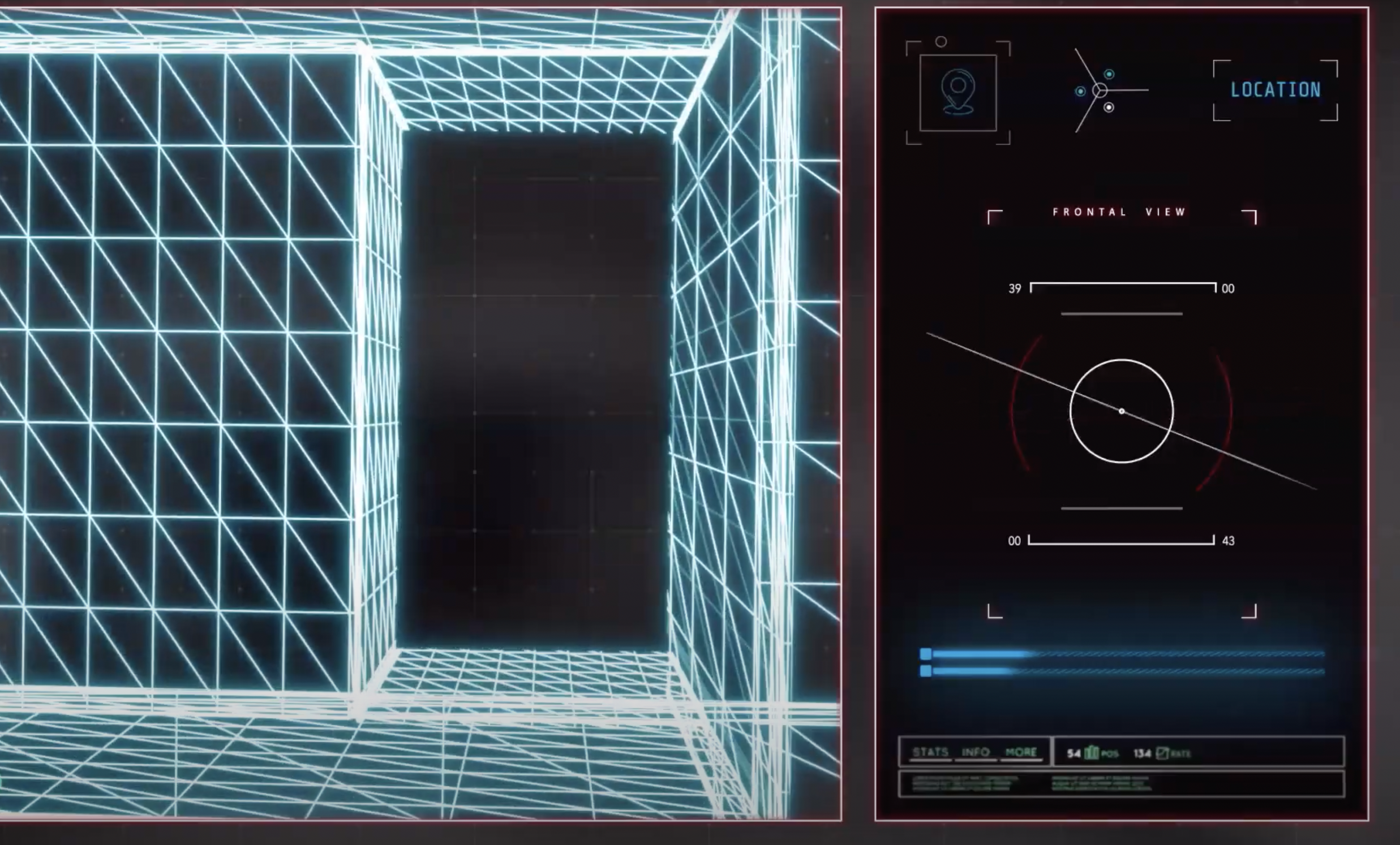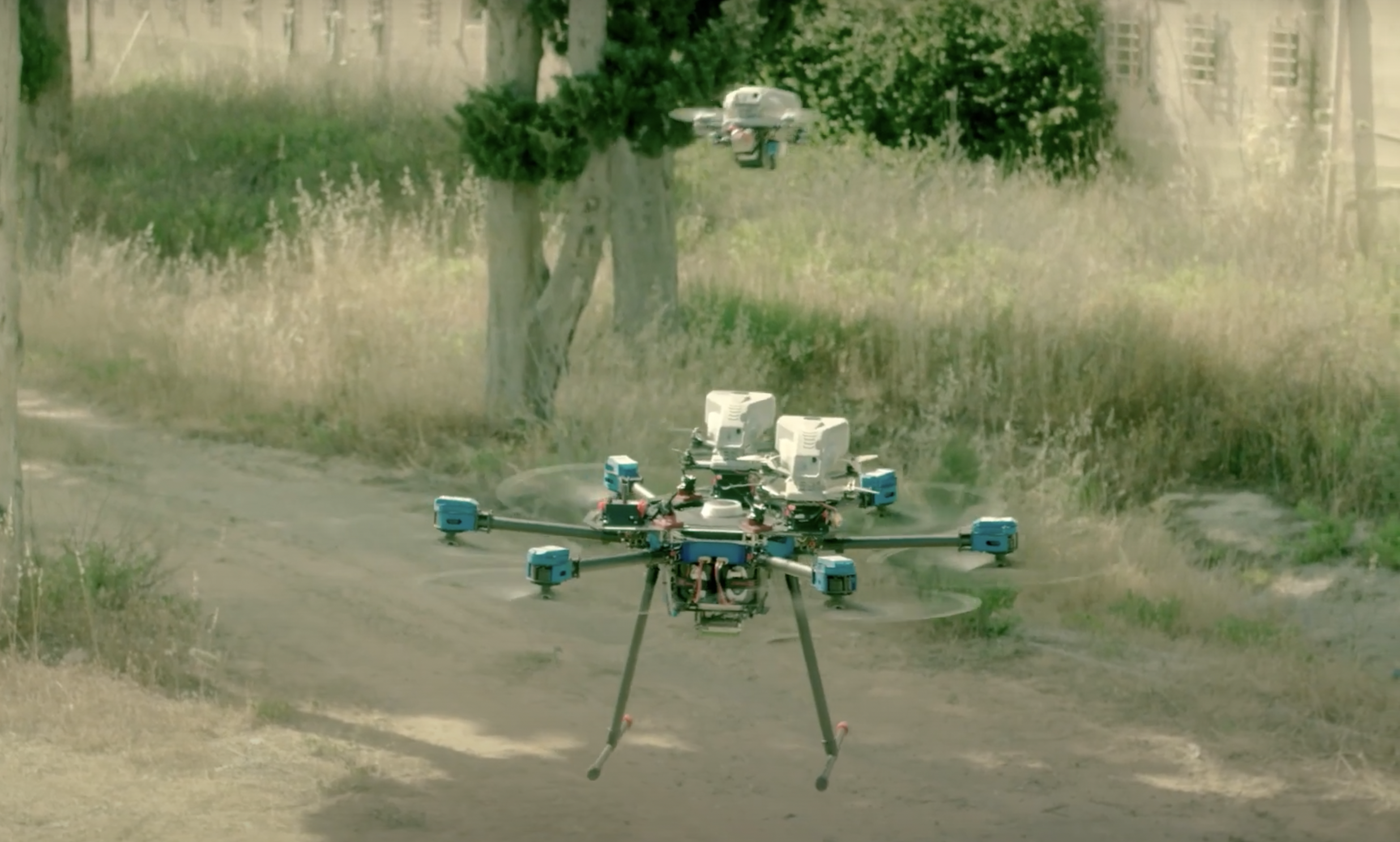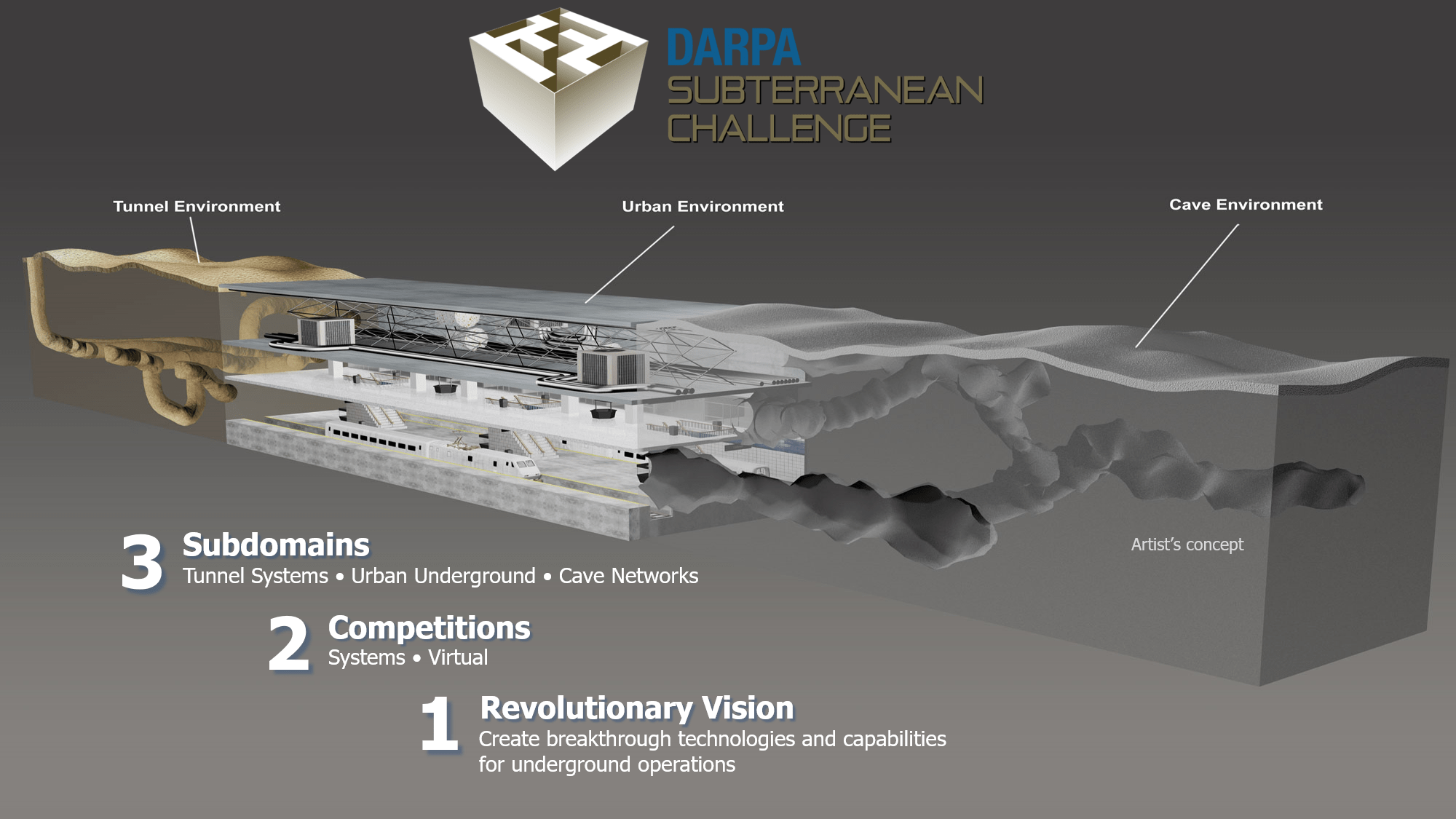Elbit Systems is now offering a small but terrifying capability for urban warfare environments, and its name is LANIUS. LANIUS is the company’s new drone-based search-and-attack loitering munition designed for short-range operation through deployment via a multicopter as well as by hand. The design is based on racing drones which allows LANIUS to utilize high degrees of speed and maneuverability to essentially rush a target before exploding. Elbit’s introduction of LANIUS only underscores how rapidly small but deadly drones are iterating in the defense space.
According to a datasheet for the drone, LANIUS has a top speed of 45 mph, a maximum takeoff weight of 2.75 pounds (1.25 kg), an operational speed of up to 20 meters per second in an outdoor environment, and a limited flight time of just seven minutes. LANIUS can carry lethal or non-lethal payloads, though Elbit hasn’t specified what exactly those weapons will consist of. LANIUS is able to communicate through Wi-Fi or a software-defined radio, and while its ability to operate with a man-in-the-loop is prominently featured by Elbit, the drone can also autonomously execute a full flight profile without intervention if needed.

The company explains that the highly maneuverable drone is designed to conduct, GPS navigation, scanning, and mapping all in complex urban combat environments. This capability is achieved through the drone’s artificial intelligence (AI) technologies powered by an NVIDIA Jetson TX2 processor, allowing the drone to formulate a 3D map of its surroundings, which is then fed back to the operator through a handheld remote device.

“LANIUS is equipped with cameras fitted with multiple visual sensors and an IMU [internal measurement unit],” reads the LANIUS datasheet. “The system incorporates a SLAM [simultaneous location and mapping] algorithm, using image processing to identify points of interest and displays relevant data and identification information to the operator.”
In a promotional video released by Elbit, a unit of soldiers can be seen surrounded by enemy fire in an urban setting with poor vantage points and tall, fortified structures. Left with few options, the fictional squadron elects to deploy LANIUS. Despite sounding like something out of a video game, as does the LANIUS capability as a whole, this capability is certainly in line with what to expect from the future of warfare.
The drone racing pedigree of LANIUS is also certainly significant. Drone racing is very much a thing and features flying small drones at high speeds through complex indoor environments in ways that are readily translatable to urban combat in some capacity. The War Zone’s Editor-in-Chief, Tyler Rogoway, laid out this exact reality in a 2014 piece.

The video then shows a slightly larger commercial-type multicopter unmanned aerial vehicle (UAV) descending from above carrying three LANIUS munitions, like a robotic mothership that could double as a delivery system to a mission area in order to make up for the brief flight time LANIUS offers. LANIUS then launches from the multicopter UAV and takes off toward the intended target while a human operator uses the handheld remote device to control it. It’s possible a larger mothership drone could also act as an airborne data-relay node to help connect the drones with their operators in dense urban environments. In a separate scene, a LANIUS is pulled from a soldier’s backpack and then deployed by hand, highlighting the different environments the aircraft could be launched from.


To help distinguish between combatants and non-combatants, it’s claimed that LANIUS comes equipped with threat and weapons classification abilities that are also supported by its AI-powered core. For context’s sake, where this could be of paramount importance would be during a hostage situation where the LANIUS operator would need to accurately identify enemies and civilians separately. Although, banking on a robot to discern between friend and foe is extremely tricky, and it’s unclear how reliable LANIUS will actually be in those scenarios, especially when operating completely autonomously.
What could help in addressing this uncertainty is the fact that LANIUS appears to require the operator’s approval before engaging a target when manned, supporting the drone’s operator-in-the-loop characteristic that Elbit highlights on the webpage.


Elbit says LANIUS is also capable of carrying out ambushes and clearing blocked openings, as described in the video. It is in these scenarios that its lethal weapons payload would be utilized. Though the details about its armament are still largely sparse, it’s certainly a possibility that the same level of ‘movie magic’ was used to dramatize the attack feature in the promotional video. It most likely just flies near its target and detonates. Whether this is a directional explosion or not is unclear, but it’s also possible that multiple types of warheads could be available depending on the target.
In a situation where LANIUS were to lose connection with its network or the controller, its aforementioned ability to operate autonomously could potentially take over, at least for some missions, but Elbit hasn’t explicitly stated whether that is an option. Elbit does, however, explain that the drone’s onboard companion computer is designed to interface with the camera assembly and drone flight computer for autonomous control. This could be especially beneficial in subterranean mapping environments where network connection may be unstable, something that the Defense Advanced Research Projects Agency has been exploring since 2017.

Whether it be the detection of structural openings or enemies, LANIUS’ AI-powered autonomous reconnaissance capabilities should increase the survivability of its human masters. Multiple LANIUS drones could also be deployed at once to address disparate mission needs, like, for example, using one drone to map the layout of an industrial complex and another to take out an enemy sniper. The LANIUS originally tasked with scouting or mapping could then attack immediately if it stumbled upon a threat, as well.
According to Elbit, the LANIUS quadcopter type is specifically intended to be a compatible facet of the company’s overarching Legion-X robotic and autonomous combat solution. Legion-X is best described as a common networked backend that can be used to operate various kinds of uncrewed systems cooperatively. The framework would enable the coordinated deployment of Elbit’s plentiful array of robotic vehicles, be it ground or air-based, in support of the human warfighter’s mission. However, LANIUS comes with two modes of operation that would allow the drone to operate independently or in conjunction with Legion-X.

All told, LANIUS offers a very compelling and flexible set of features for use down to the individual unit level and has an especially attractive use case in urban environments where future wars are likely to be fought. Just like the Chinese drone-deployed machine-gun-toting robodog you can read all about here, while terrifying, LANIUS represents the future of warfare. Elbit’s leveraging of racing-drone capabilities into a highly maneuverable flying assassin is a natural progression, although the drone assassin part is not a new concept, by any means.
Above all else, it packages this capability into a full production system by a major defense innovator and will evolve over time. Although not disclosed at this time, warning capabilities could be in LANIUS’ future, as well, which could drastically enhance each system’s individual capabilities. One could see a situation where a swarm could be unleashed on an evacuated town full of combatants, where they could work cooperatively to eliminate the enemy within a certain geofenced area autonomously, for instance.
The U.S. Army is already working to train to deploy and defend against urban swarm threats, as Lt. Gen. Scott McKean, the Project Convergence experiment director and deputy commander of Army Futures Command described in this recent article of ours. It stated, in part:
In another first for allied interoperability, swarms of up to 50 drones could provide situational awareness data to various allied units in real-time, McKean said. In all cases, McKean noted that a 2nd lieutenant or a soldier of lesser rank could plan the mission, launch, and operate a drone swarm with little to no outside assistance.
“We were able to get different drone swarm capabilities employed by all of our partners out here,” McKean said. “In some cases, we were able to get 50 or more drones operating over an urban area, controlled by one operator. And that, to me, was a significant advance in our capabilities of employing unmanned aerial systems.”
Simulated opposing forces at Fort Irwin adapted to the threat of swarming drones. Still, coalition operators were able to react to their defenses and send different mixes or sizes of swarms to overwhelm or circumvent them, creating a cycle of innovation, he said.
“The effect that it had on the opposing force was significant,” McKean said. “It’s something that we’re learning because we know that we also have to be ready to respond to those types of capabilities when employed against us. … A lesson that I’m taking away from this is, you know, the enemy will adapt. And this will be a continuous cycle of adaptation as we employ technologies, regardless of what they are. That speed will provide you a temporal element of decision advantage, but it’ll be fleeting for sure.”
When we might see LANIUS on the battlefield is unclear, but The War Zone will be sure to keep you updated along the way.
Contact the author: Emma@thewarzone.com
